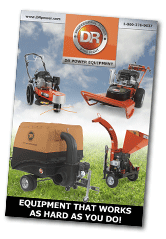Fire Prevention 101: Ten Tips for Preventing Brush Fires
According to the National Fire Protection Association, one of every four fires in the US takes place in dry brush, grass, or forests. Protect yourself, your family, and your property by taking steps to reduce the risk of brush fires.
-
Create a ‘defensible area’ around your home. Mow brush, weeds, and any overgrown, tangled areas within at least a 30-foot radius of your house, barn, and other structures.
-
If you own a larger property, make sure you have fire breaks at regular intervals. Fire breaks are bare strips within a wooded area that can keep a fire contained and stop it from consuming acre after acre of your land. Fire breaks should be at least 10 feet wide and contain no more than 3-inch high grass. Regular maintenance will be necessary to keep them from becoming overgrown and hazardous.
-
Keep your roof and gutters clear of debris — anything dead or dry that could ignite if there was a fire nearby. Trim any dead branches that hang over or near your roof.
-
When you design your landscape, keep fire prevention in mind and avoid plantings such as lines of trees that create a link between wooded areas and your house.
-
Some plants pose a higher risk of ignition than others. If you live in an area with a particularly high risk of brush fires, avoid plants such as acacia, cedar, cypress, eucalyptus, fir, juniper, pampas grass, and pine.
-
Water your plants regularly and rake away dead leaves and branches as needed.
-
Avoid plantings that create a link between tree branches and the ground. These could allow a fire to travel easily from an ignited branch down to the ground, or turn a low ground fire into a blazing forest fire.
-
Stack firewood at least 100 feet from your house and uphill if possible.
-
When you use power equipment in dry or overgrown areas, make sure the exhaust vents are kept clear. If they are obstructed by flammable materials, they could ignite under the right circumstances.
-
Keep up to date on fire hazard warnings and precautions from local and federal agencies, especially during the hottest and driest times of the year. And remember, spring is the best time to get a jump on fire prevention, mowing brush and getting rid of trees while they’re still young, and clearing debris that has accumulated during the winter.
Want to learn more about the DR Power Equipment line-up?
Order your FREE catalog!

What's inside
- Information about the full line of DR equipment
- Money-saving promotions
- Product ordering information
